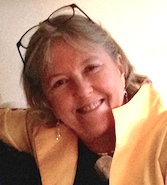Interview by Sally Tayie.
With all the turbulence and changes taking place all over the world now (Brexit, Trump’s presidency among others) and with the new role played by social networks, newspapers and journalism seems to be losing credibility among public opinion. Is it a fatality or can the newspaper and journalist do something against this tendency?

Yes, news publishers and journalists can do something, and are already doing quite a bit. For example, our next World News Media Congress has as one of its core themes Trust and quality: now!, alongside the usual New revenue pillars and such. This is our main event of the year for both editorial and business people, and all of them will do some further exploration of solutions. The constructive journalism movements address this issue. News in education people all over the world are working on it in many ways. Etc.
What is the reason behind the interest of World Association of Newspapers and News Publishers in media literacy?
It’s pretty simple, actually. If upcoming generations don’t develop an understanding of how professionally created journalism differs from other content and the role of that content in our society, we as an industry are doomed. And so is democracy, I think. In early March, we’ll be publishing the first installment of a new global report on how news publishers are and can be involved in the media literacy subset of news literacy along with a database of 130 examples of this work by publishers or their national associations and also examples quality work by others that could inspire publisher action. This was commissioned by the American Press Institute, which asked that we concentrate on non-US actions.
“If upcoming generations don’t develop an understanding of how professionally created journalism differs from other content and the role of that content in our society, we as an industry are doomed. And so is democracy, I think.”
What role do you think news literacy should play today to ensure maintaining and renewing trust in newspapers and journalism?
First, you should know that for WAN-IFRA, engaging in news literacy means helping citizens, especially children and teenagers, understand, value and participate in 21st century journalism in a democracy as they analyze all kinds of content, most effectively through a journalistic prism. An understanding of how journalism works, the dangers to some of those who do it, and its purpose in encouraging democracy all need to be at the start of any news media (or media literacy) initiative, well before the classic deconstruction of media messages. All of that offers a basis for building trust. Not sufficient, of course, but necessary. Another key element calls for news-makers to do a better job of regularly explaining how news are made.
“News literacy means helping citizens, especially children and teenagers, understand, value and participate in 21st century journalism in a democracy as they analyze all kinds of content, most effectively through a journalistic prism.”
Do you think media literacy can contribute to promote better journalism and active citizenship?
Yes, but it can also be harmful to active citizenship if not done well. We took particular notice after one seminal study. In 2008, Paul Mihailidis did research that found surprisingly negative outcomes of a well-meaning university media literacy course, it remains an eye-opener.
What do you think is the best mechanism to widen the scope of news literacy and applying the educational system?
That’s a key question, I don’t think we need to insist on special news literacy or media literacy curricula and courses as much as getting key elements woven throughout existing courses. This means using reporting techniques in writing class, examining the role of journalism in building democracy in civics, history, etc. (and the flaws, of course). I think news literacy works a lot better in context and avoids potential fights about educational turf.
What are your expectations to the field of youth engagement and news literacy in the year 2017?
The field of news literacy is getting huge attention now because of the recent heightened awareness of fake news. I worry a little bit about too much hype. I think youth engagement, which covers all the ways news publishers and young people can interact, will continue to see a steady increase. At WAN-IFRA, we’ll do a few tweaks in both. We are embarking on a consolidation and expansion of our own resources and joint global actions under the overall label of the Veritas Approach, preferably working with partners.
“The field of news literacy is getting huge attention now because of the recent heightened awareness of fake news.”
Since evaluation is regarded as one of the most essential steps in creating interventions/projects, from your opinion, what are the best evaluation techniques to assess news literacy interventions?
One should evaluate them as one does any such endeavor, based on results. I’m not an expert on such evaluation, though, and generally leave it to people in each country to decide what process makes most sense for them. What we try to do social franchising: Take a successful idea that is working in one place, distill its essence, help practitioners in another place create their version of it, and then use the clout that the resulting international network provides.
From your perspective, is news literacy enough to engage youth with quality journalism? And how far do you think youth finds news relevant to their daily lives?
First, young people do find news relevant to their lives, it’s just not all the news, just like anybody else. Again, our take on news literacy is multifaceted – much like the approach of the journalists who founded organizations like The News Literacy Project in the United States. Studying news content — or even the role of journalism — is not enough. It is important for young people to get a chance to try journalism themselves to truly understand what goes into quality, ethical journalism. It’s fun, but it ain’t easy. Also, learning the skill of carefully questioning information and sources will prove useful for the rest of their lives.
“It is important for young people to get a chance to try journalism themselves to truly understand what goes into quality, ethical journalism. It’s fun, but it ain’t easy.”
Based on your experience in the field of youth and news literacy, to what extent do you think youth are aware of the role journalism plays in a society and to what extent do they acknowledge this role?
That’s the hard part, isn’t it? And it’s why I believe any media literacy or news literacy course needs to start with role journalism plays in a society. But the lessons should not be general and the approach cannot be preachy. Once young people learn themselves about the real people who have been killed or put in prison for doing news work, they tend to “get it.” The exposure can be a classroom talk from an exiled journalist or, as one university has done, an international course that assigns students to investigate the cases of jailed journalists. The closer to personal, the better. In my own career at WAN-IFRA, I’ve had the honor of working with some of those brave people, and it’s both humbling and hugely inspiring.
For decades the issue of technology presenting challenges to the newspaper industry has been addressed, with the rapid spread of social networking sites andthe scenario of convergence. Nowadays reaching the audience through different platforms is followed by the majority of newspapers and mainstream. What measures should the press take in order to assure the survival of hardcopy newspapers? And do you think it is essential to maintain their existence?
I love print, and so do a lot of young people, but we are in a digital world. Print will survive, I think, but not as the routine mass medium. That’s pure economics. Print will be the premium brand of news, I think. Even now, when many a university student is dealing with a text that’s important to them, they print it out. There is a rebirth of print editions for children because parents want their kids away from screens for awhile and, if our own inquiry into the best examples of the phenomenon is right, children end up highly valuing those print editions. For millennials, new, in-depth magazines are popping up. It’s an interesting phenomenon. My hope is that organizations devoted to quality news can survive to pay quality journalists. I worry that they won’t be able to do so.
“I love print, and so do a lot of young people, but we are in a digital world. Print will survive, I think, but not as the routine mass medium. Print will be the premium brand of news.”
“My hope is that organizations devoted to quality news can survive to pay quality journalists. I worry that they won’t be able to do so.
With the escalating phenomenon of fake news on social media, fact-checking emerged as an independent industry (with websites such as Politifact and FactCheck.org). How do you think this has an impact of the role of journalists? Does it help or act as a threat to credibility and audience trust?
It may be doing both. Fact-checking services are all the rage right now, as media monitoring was a few years ago. The Duke University Reporter’s lab just counted 114 fact-checking in 47 countries. Two years ago, the total was 44. It’s great to have all these wonderful actions, but it could all also backfire with the public believing that it’s simply too hard to try to figure it all out — much less which service to follow — and just give up trying.
With the power social networking sites like Facebook and Twitter are gaining over news distribution and with a lot of young generations using these platforms for news. Do you think social media is now regarded as a filter to news content? Do you think this can act as a threat to the news industry and to journalism? How should news organizations, especially newspapers respond to this phenomenon?
Yes, users of social networks are now part of the news dissemination process and it can be a threat. But it’s also an opportunity as it makes makes news literacy and an awareness of sources both more critical and more interesting now than ever. But we need to concentrate on empowerment, not fear. Our own latest work calls for a Veritas Approach with modules that specifically help young people learn to approach all information as if they were a reporter. We’ve been working with the Newseum (Washington, DC) and enhanced and internationalized one of their activities called Believe it or Not that ends up with students using journalistic skills in a research project. It’s The Questions to Keep Asking.
Do you think newspapers are really engaged in the news literacy movement?
In short, hell yes. In fact, I would go as far as to say they have been precursors of it. Since the 1930s, newspapers and educators have partnered in news in education programs – often on the national level through publisher associations — that called for using print editions in all kinds of classes for skills ranging from basic reading and numeracy through understanding interesting examples in a topic to high level critical thinking. Guides from the start explained how news worked and often provided students with a chance to do news. Our work in news literacy now is the logical next step of all that.
Also, we give out annual World Young Reader Prize to find and honor news publishers who are innovating in youth engagement and news literacy in transferable ways. Two of this year’s winners deal with news literacy: The New York Times Learning Network (USA), which recently provided tips for finding reliable sources, and the Dutch youth news initiatives, 7Days and KidsWeek, regularly explain how it got a story and recently offered age-targeted tips about what news to trust and challenged readers to fake news quiz. See part 1 of our News Publishers and News Literacy report for details.

Finally, media associations that represent newspaper are important players in this work. Finland helped the country develop its media literacy curriculum and has devoted its national Press Week initiatives to an Is it True initiative to help teachers show students how to navigate all kinds of content.
In the U.S., the News Media Alliance’s education foundation, the American Press Institute, is run by the author of Blur: How to Know What’s True in the Age of Information Overload (Tom Rosenstiel) and does considerable work around what makes people trust and rely on news. We have designated these two and 14 other national news media associations as WAN-IFRA Centers of Youth Engagement Excellence, primarily for the news literacy work they do.













Add Comment